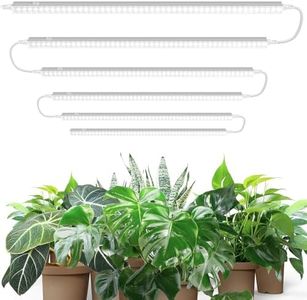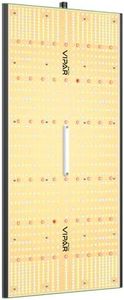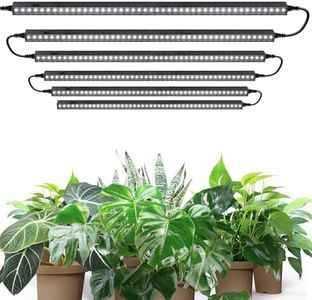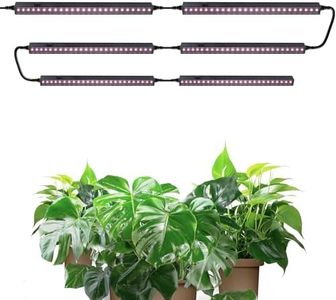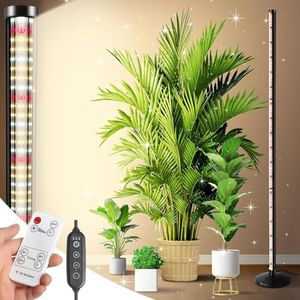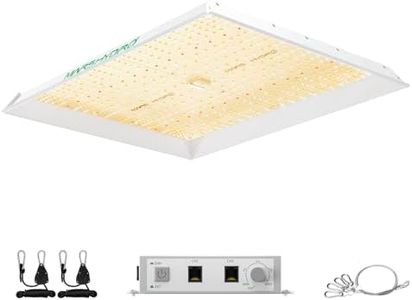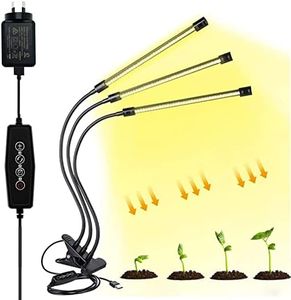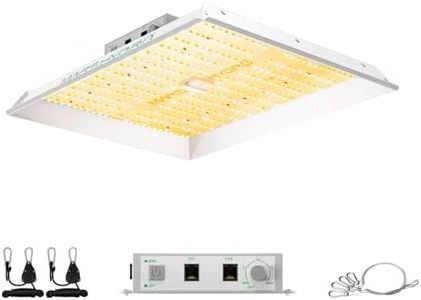We Use CookiesWe use cookies to enhance the security, performance,
functionality and for analytical and promotional activities. By continuing to browse this site you
are agreeing to our privacy policy
10 Best Grow Lights For Indoor Plants
From leading brands and best sellers available on the web.By clicking on a link to a third party's website, log data is shared with that third party.
Buying Guide for the Best Grow Lights For Indoor Plants
Choosing the right grow lights for your indoor plants can make a big difference in how healthy and vibrant your plants grow. Since natural sunlight is limited indoors, grow lights mimic sunlight and provide the energy that plants need for photosynthesis. The best approach is to match the light with the requirements of the plants you have (such as succulents, leafy greens, or flowering plants), the size of your growing space, and how hands-on you want to be with adjusting the lights. Understanding the basic specifications of grow lights will help you make a choice that encourages the thriving growth of your indoor garden.Light SpectrumLight spectrum refers to the colors of light that a grow light emits. Plants use different parts of the spectrum for various growth stages—blue light helps with leafy growth, while red light is good for flowering and fruiting. Some lights are 'full spectrum,' meaning they provide a balance of all the colors found in sunlight. If you are growing a variety of plants or want to keep it simple, a full spectrum light is generally the easiest and most versatile choice. For specific needs (like growing only leafy greens or supporting blooming flowers), you can look for grow lights that emphasize blue or red light specifically.
WattageWattage measures how much power the light uses, but it also gives a rough idea of how powerful the light is. Smaller spaces or just a few plants will do fine with a lower wattage (under 30 watts), while larger areas or many plants might need higher wattages (over 50 watts). However, efficiency is also important, and more wattage doesn't always mean better growth—it's about how much light actually reaches the plants. Think about the size of your indoor garden and choose a wattage that adequately covers your growing area without wasting energy.
Light Intensity and Coverage AreaLight intensity indicates how strong the light is, and the coverage area tells you how much space the light will cover. Lights are often rated for how high above the plants they can be hung and still provide enough energy. For a single shelf or small window garden, lower intensity and smaller coverage areas work well. For bigger plant groupings or greenhouse sections, you want higher intensity and larger coverage. Match the intensity and coverage area to how many plants you have and how far apart they're spread.
Type of Grow Light (LED, Fluorescent, Incandescent, HID)There are several types of grow lights: LED, fluorescent, incandescent, and HID. LEDs are the most common nowadays, as they are energy-efficient, long-lasting, and run cool, making them safe and convenient for most indoor gardens. Fluorescent lights are also energy-efficient and gentle for seedlings or herbs. Incandescent and HID lights are less commonly used in homes because they generate more heat and use more electricity. For most people, LEDs offer the best balance of cost, safety, and effectiveness for indoor plants.
Adjustability (Height and Timer Features)Being able to adjust the height of your grow light helps you direct the optimal amount of light to your plants as they grow. Many grow lights also come with timer features for automatic on/off cycles, which help mimic natural daylight patterns and free you from needing to remember to turn lights on and off. If you want a low-maintenance setup or if you’ll be away from home, choosing a light with adjustable height and a built-in timer is very helpful.
